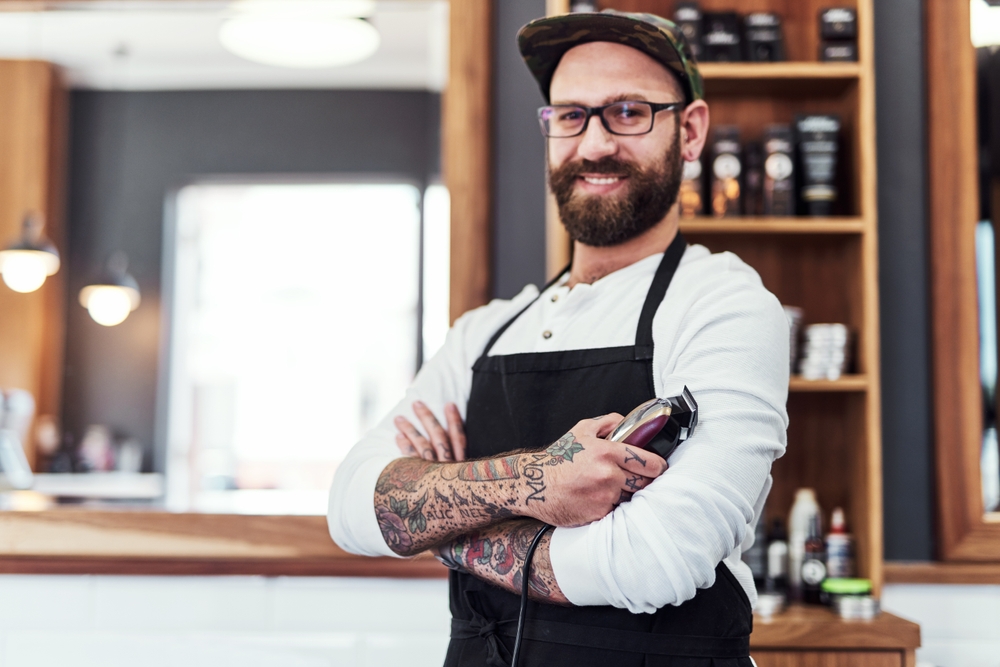
Barbershops have always been more than just places for a trim. They’re hubs of conversation, culture, and confidence. But even this timeless tradition isn’t immune to change. As grooming trends evolve and customer expectations rise, many professionals are retiring techniques and habits that no longer fit today’s standards. What once symbolized craftsmanship can now seem old-fashioned, inefficient, or even unhygienic. Here are nine outdated barbershop practices that today’s stylists say are finally getting left behind.
1. Using the Same Razor on Everyone
Once a common practice, reusing razors without proper sanitation is now a hard no. Modern hygiene standards and stricter state regulations require barbers to use disposable blades or sterilized tools for each client. In the past, a single straight razor might service an entire day’s worth of customers, a nightmare by today’s health codes. Reusing blades increases the risk of infection and cross-contamination. These days, any shop that doesn’t swap out razors per client won’t stay in business for long.
2. Relying on Hair Tonics and Pomades from the 1950s
There was a time when every man walked out of the barbershop with slicked-back hair glistening with heavy tonic. But stylists admit those alcohol-based, oil-heavy products are relics of the past. They clog pores, weigh hair down, and lack the nourishing ingredients of today’s water-based formulas. Modern grooming is about texture, flexibility, and a natural finish. Outdated barbershop practices like overusing tonics are being replaced with cleaner, healthier alternatives.
3. The “One-Size-Fits-All” Haircut
Old-school barbers often had a handful of go-to cuts (the crew, the buzz, or the flat top), and everyone got a variation of the same thing. But modern clients want personalization, not cookie-cutter results. Stylists today analyze face shape, hair type, and lifestyle before picking up their clippers. The goal isn’t just short and neat; it’s a tailored style that fits the individual. Outdated barbershop practices like uniform cuts are giving way to creativity and customization.
4. Skipping Proper Consultations
In the past, a man would sit down, say “just a trim,” and trust the barber to take it from there. But stylists now view communication as a professional standard, not an option. Modern barbers take time to ask about desired styles, maintenance preferences, and problem areas. This ensures satisfaction and builds trust between the client and the barber. Skipping that conversation is one of the outdated barbershop practices that can lead to unhappy clients and lost business.
5. Overreliance on Aftershave Cologne
That familiar barbershop scent of strong alcohol-based aftershave used to define the experience. But stylists today are phasing it out for gentler, skin-friendly alternatives. High-alcohol products dry out and irritate skin, especially after a shave. Modern barbers now use soothing balms with aloe, chamomile, or tea tree oil instead. Outdated barbershop practices like dousing clients in old-school cologne are officially on their way out.
6. Gender-Based Pricing
Once considered standard, charging men and women differently for similar services no longer flies in modern barbershops. Stylists now recognize that haircut pricing should reflect time and complexity, not gender. A short haircut on a woman should cost the same as one on a man, and vice versa. This shift promotes fairness and inclusivity while reflecting a more progressive industry. Outdated barbershop practices that separate clients by gender are quickly becoming unacceptable.
7. Ignoring Scalp Health
Old-school barbers focused on the cut, not what was happening beneath the hair. But today’s stylists understand that scalp health directly affects hair growth and texture. Dryness, dandruff, and irritation aren’t just cosmetic issues. They signal underlying concerns that need care. Many modern barbers now incorporate scalp treatments, massages, and product education into their services. Overlooking scalp care is one of the outdated barbershop practices that’s disappearing fast.
8. Cash-Only Operations
While the “cash-only” barbershop had its charm, it’s no longer practical. Clients expect the convenience of digital payments, booking apps, and even contactless tipping. Sticking strictly to cash limits in business frustrates younger customers. Modern barbers who adapt to tech not only grow faster but also simplify operations. Refusing cards or digital payments is one of the outdated barbershop practices that keeps a business stuck in the past.
9. Neglecting Modern Sanitation and Tools
Barbers once relied on basic disinfectant jars and reused towels, but today’s expectations are higher. Tools must be sterilized between each client, and single-use items are now the industry standard. Modern barbershops invest in UV sanitizers, disposable neck strips, and antimicrobial capes. Cleanliness isn’t just a legal requirement; it’s part of the overall experience. Any shop still cutting corners on hygiene practices will quickly earn a bad reputation.
The Modern Barbershop Is About Skill and Standards
The best barbers today blend old-world craftsmanship with new-world professionalism. They respect tradition while embracing innovation, from sanitation protocols to styling trends. Outdated barbershop practices once defined the trade, but progress is what keeps it alive and relevant. Today’s clients want more than a cut; they want expertise, comfort, and trust. The modern barbershop isn’t losing its roots. It’s just sharpening them for a new generation.
Have you noticed your local barbershop modernizing, or still clinging to old-school habits? Share your experiences and favorite updates in the comments below!
What to Read Next
- Wellness 2025: Why Barbershops Became Men’s Mental Health Hubs
- Why Barbers Say Most Guys Lie About Their Hairline
- Here Are The Worst 7 Barbershops In Detroit According To Reviews
- 10 Grooming Products Men Buy That Don’t Actually Work
- 9 Fall Grooming Mistakes That Drive Women Away Instantly
The post 9 Barbershop Practices That Stylists Admit Are Outdated appeared first on Clever Dude Personal Finance & Money.







